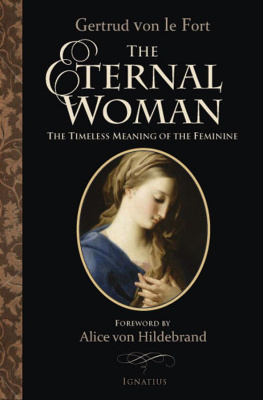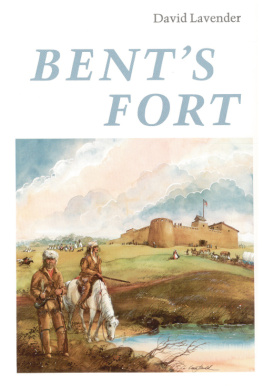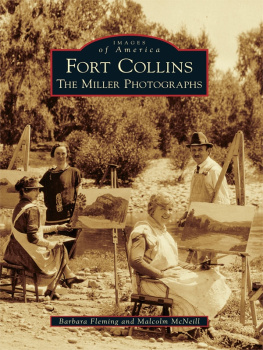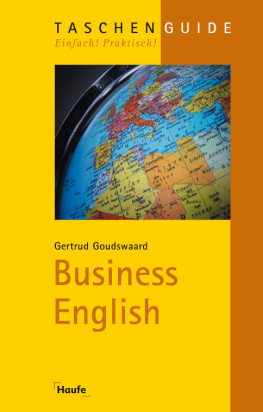Gertrud von le Fort - The Eternal Woman
Here you can read online Gertrud von le Fort - The Eternal Woman full text of the book (entire story) in english for free. Download pdf and epub, get meaning, cover and reviews about this ebook. year: 2010, publisher: Ignatius Press, genre: Science. Description of the work, (preface) as well as reviews are available. Best literature library LitArk.com created for fans of good reading and offers a wide selection of genres:
Romance novel
Science fiction
Adventure
Detective
Science
History
Home and family
Prose
Art
Politics
Computer
Non-fiction
Religion
Business
Children
Humor
Choose a favorite category and find really read worthwhile books. Enjoy immersion in the world of imagination, feel the emotions of the characters or learn something new for yourself, make an fascinating discovery.
- Book:The Eternal Woman
- Author:
- Publisher:Ignatius Press
- Genre:
- Year:2010
- Rating:3 / 5
- Favourites:Add to favourites
- Your mark:
- 60
- 1
- 2
- 3
- 4
- 5
The Eternal Woman: summary, description and annotation
We offer to read an annotation, description, summary or preface (depends on what the author of the book "The Eternal Woman" wrote himself). If you haven't found the necessary information about the book — write in the comments, we will try to find it.
The Eternal Woman — read online for free the complete book (whole text) full work
Below is the text of the book, divided by pages. System saving the place of the last page read, allows you to conveniently read the book "The Eternal Woman" online for free, without having to search again every time where you left off. Put a bookmark, and you can go to the page where you finished reading at any time.
Font size:
Interval:
Bookmark:
THE ETERNAL WOMAN
Gertrud von le Fort
The Timeless Meaning of the Feminine
Translated by
Marie Cecilia Buehrle
Foreword to the New Edition
by Alice von Hildebrand
IGNATIUS PRESS SAN FRANCISCO
Original English edition
1954 by the Bruce Publishing Company
Published with ecclesiastical approval
Cover art: Virgin Annunciate , Batoni Pompeo (1708-1787)
Runion des Muses Nationaux / Art Resource, N.Y.
Cover design by Riz Boncan Marsella
2010 by Ignatius Press, San Francisco
All rights reserved
ISBN 978-1-58617-298-5
Library of Congress Control Number: 2008933485
Printed in the United States of America
by Alice von Hildebrand
by Max Jordan
THE ETERNAL WOMAN
There are books that being timeless are always timely. This is why the reprinting of Gertrud von le Forts The Eternal Woman should be not only welcomed, but acclaimed.
The felicitous title of this great book is taken from the famous words of J. W. Goethe: Das Ewig-weibliche zieht uns hinan. (The eternal feminine draws us on.) They refer to womans role in time because her meaning hints at eternity. With unfailing female intuition, von le Fort addressed this topic of crucial and perennial importance: the role of woman in the salvation of the world, which is the battlefield between good and evil, life and death.
Since the Garden of Eden, the Evil One and the Woman have been in the arena. And the weapon chosen by mans enemy today is once again a seemingly innocuous question: Why are women humiliated and looked down upon by the Church? Indeed, why? Are not questions legitimate?
Yes, but there are questions that are raised only when a person has adopted a wrong metaphysical posture. This, in turn, leads him to put God in the dock and arrogantly challenge him to justify his decisions. Among such questions: Why should women deliver their children in pain and anguish while for men procreation is nothing but a moment of ecstasy? is not maternity an obstacle to a womans development, locking her in the narrowness of her home and condemning her to petty, mediocre work for the sake of husband and children? Why should women, usually more intuitive than men, be refused the dignity of the priesthood?
Forgotten are the privileges granted to woman from the very beginning: her body is not taken from the dust of the earth but from the flesh of a human person; she is exalted by being called the mother of life; she is the one whose reproductive organs are veiledand the veil not only symbolizes the sacredness of her task as life bearer, but also hints at the fact that a female womb would, one blessed day, be a tabernacle inhabited by the Holy one, the savior of the world, who would have a human mother but no earthly father.
In 1934, when The Eternal Woman was published, the poisonous blossoms of feminism were still in the bud. But Gertrud von le Fort, endowed with a prophetic sense, refuted the spurious claim that the metaphysical equality of man and woman means their identity. This conclusion leads to the horror of unisex, in which the sexes are not complementary but interchangeable. This is debasing for both men and women. As noted by G. K. Chesterton, a contemporary of von le Fort: There is nothing so certain to lead to inequality as identity (Woman and the Philosophers).
In contrast, The Eternal Woman exalts the feminine. How profoundly does von le Fort show the superiority of the sacred over the secular, of genitum over factum , of maternity over productivity, of mission over profession. She outlines admirably the mystery of femininity: The unveiling of woman always means the breakdown of her mystery, and the mission of woman is primarily a religious one. A highly cultivated woman, she wove her insights with artistic and literary references that are so enriching because they are not the fruits of abstraction but of meditation upon personal, lived experiences.
Such fruitfulness is also evident in von le Forts other works such as The Song at the Scaffold and particularly in her sublime Hymns to the Church a literary Te Deum for her conversion. The latter work so impressed my late husband, Dietrich von Hildebrand, that he had it printed by the Theatiner Verlag, the Catholic publishing house he had founded in Munich a few years before.
This event established a close contact between the two authors who shared many common interests, including a love of cats. Von le Fort was a pedigree cat breeder and when she discovered that von Hildebrand and his first wife were also fond of these graceful felineswhose main raison detre is to delight men by their beautyshe gave them a superb angora that was given the name of Ildefons. This enchanting animal had a privileged life but was lonesome, so von le Fort gave him an equally lovely companion named Suleika. They lived in perfect monogamy (not being permitted to leave the house), and gave much joy to the von Hildebrands.
This very Franciscan love of Gods creatures inevitably led von Le Fort to a feeling of awe for the dignity of human life. With female intuition, she seemed to anticipate the gravity of our contemporary situation, foreseeing the coming war on maternity as a crime whose horror threatened the future of humanity and is in fact a satanic attack on Mary, the blessed one who gave birth to the Savior who is the way, the truth, and the Life .
The author never loses sight of the outcome of this war between Life and Death. Throughout she is inspired by Mary, the great and joyful discovery that von le Fort, like other prominent Protestant converts, made upon entering the Church. The blessed one among women is Virgin, Bride, Spouse, and Mother; she is the Woman clothed with the sun, who will crush the head of the serpent. It is Mary who teaches that receptivitytotal openness to Gods wordis the royal road to holiness. When offered to become the Mother of the Savior, her response was fear, amazement, awe. But upon being promised that her virginity would be preserved, she spoke the blessed words that were going to open the door to salvation; Fiat , Be it done to me.
This gem of a book is a sublime meditation on the words of St. Paul: For when I am weak, then I am strong (2 Cor 12:10). It is when we acknowledge our helplessness that Gods power is made manifest in us. The Eternal Woman is a clarion call to women: to imitate Mary, the Mother par excellence, is the road to victory: I can do all things in him who strengthens me (Phil 4:13).
Alice von Hildebrand
This book was first published in Germany, in 1934. At this writing, over one hundred thousand copies have been sold, and the original has so far been translated into French, Italian, Spanish, Portuguese, and Dutch. All these translations were difficult to provide, for the German version itself is not easy reading, and translating it in each instance constituted a task requiring unusual skill.
Various attempts were made in the English language. Excerpts of the book first became available to American readers in the New York Commonweal , in 1936. Now, at last, comes this full English translation which represents the best efforts of both translator and publisher to produce a classic in its own right.
It can be said without fear of contradiction that no book like this has ever before been written, none certainly on this difficult subject as penetrating and with as deep an insight. It is a book on woman written by a woman whose competence in dealing with her topic is unique. For Gertrud von le Fort not only is a trained philosopher and historian. She is also a highly gifted poet and, above all, steeped in the noblest traditions of the Christian past, which in the light of the present day she interprets with a rare mastery.
Next pageFont size:
Interval:
Bookmark:
Similar books «The Eternal Woman»
Look at similar books to The Eternal Woman. We have selected literature similar in name and meaning in the hope of providing readers with more options to find new, interesting, not yet read works.
Discussion, reviews of the book The Eternal Woman and just readers' own opinions. Leave your comments, write what you think about the work, its meaning or the main characters. Specify what exactly you liked and what you didn't like, and why you think so.












